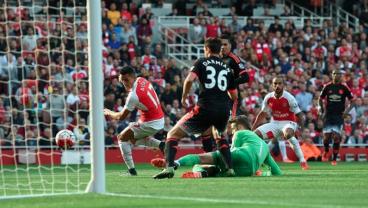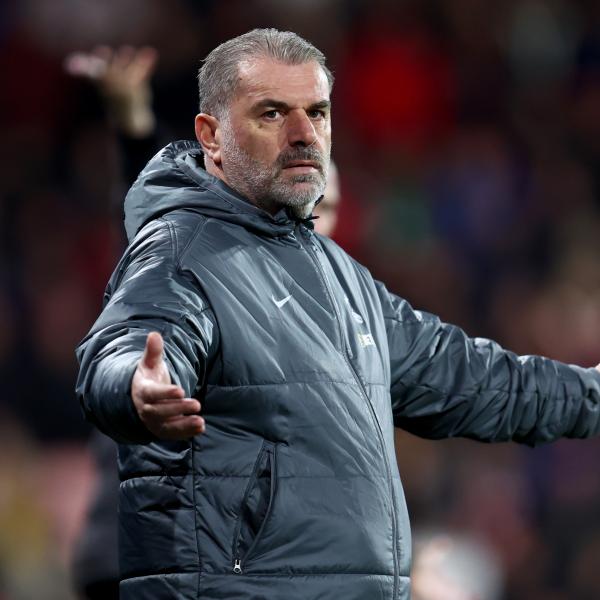In 365 days — or 31,536,000 seconds, but who’s counting? — the 2018 World Cup will kick off from Luzhniki Stadium in Moscow on June 14. A month later, the world champion will be crowned at the same stadium on July 15.
For that one month, all eyes will be on Russia, not for their meddling in U.S. elections or invading sovereign nations, but for the planet’s greatest sporting event.
Here’s what you need to know for the rapidly approaching World Cup.
Dates
With a year to prepare, make sure these dates are in your calendar leading up to next year’s tournament.
June 17-July 2, 2017 — The Confederations Cup will give Russia a dry run in preparation of next year’s World Cup.
Oct. 10, 2017 — The final matches for CONCACAF qualifying will be held on this Tuesday. While the U.S. and Mexico would like to be qualified by this point, four years ago Mexico needed a last-second helping hand from the U.S. to reach Brazil 2014.
November 2017 — The final qualifying playoffs will be in November, including intercontinental playoffs and second-place playoffs in Europe.
Friday, Dec. 1, 2017 — The World Cup draw will take place in the State Kremlin Palace in Moscow, venue built for Soviet-era Communist Party meetings. Fans will fret over being thrown into the Group of Death and dream of a path to a final.
Thursday, June 14, 2018 — Russia and a Group A opponent will face off in the first game of the 2018 tournament in Moscow. Hopefully Vladimir Putin doesn’t invade said opponent if his country loses.
Saturday, June 30, 2018 — The knock-out rounds begin with matches in Kazan and Sochi in the Round of 16.
Sunday, July 15, 2018 — The final will be played Luzhniki Stadium.
Monday, July 16, 2018 — Fans for 99.9 percent of the world begin fantasizing about winning the next World Cup.
Locations
The 2018 World Cup will be played at 12 venues across 11 cities in Russia, with Moscow hosting matches in two stadiums. Unfortunately, the Russians aren’t very creative in naming their stadiums, but it beats having every stadium named after a phone company. Eight of the 12 stadiums were built for the World Cup.
Ekaterinburg Arena, Ekaterinburg — The eastern-most venue is also the oldest, built in 1953. It will seat 35,696 when renovations (including a roof and temporary stand) are complete. Home to FC Ural.
Kaliningrad Stadium, Kaliningrad — This stadium is being built on an island that had for years been an untouched wilderness in the heart of the city. The western-most location will seat 35,212 and be the new home of FC Baltika Kaliningrad.
Kazan Arena, Kazan — Home to FC Rubin Kazan, this arena resembles a water lily on the nearby Kazanka River when viewed from above, because why not? The stadium seats 44,779.
Luzhniki Stadium, Moscow — The 62-year-old stadium will be refurbished to be the premier stadium for the World Cup, hosting seven matches, including the first game, a semifinal and the final. The capacity will be increased to 81,000 and is the most common venue for the Russian national team’s home games.

Photo: @moscowgov | Twitter
Spartak Stadium, Moscow — FC Spartak Moscow was founded in 1922 but didn’t have its own venue until this gem opened in 2014. Seating 43,298, the stadium resembles Munich’s Allianz Arena from the outside.
Nizhny Novgorod Stadium, Nizhny Novgorod — The sparkling new stadium to be built where the Oka and Volga rivers converge will seat 45,331. Olympiets Nizhny Novgorod will take over the stadium after the World Cup.
Rostov Arena, Rostov-On-Don — Russia apparently likes building stadiums in scenic locations. This new venue is being erected on the banks of the Don River. When completed it will seat 45,145 and be the new home for FC Rostov.
Saint Petersburg Stadium, Saint Petersburg — Another island stadium, this new venue will be the second largest (68,134) and host seven matches, including a semifinal and the third-place game. Japanese architect Kisho Kurosawa’s vision for the stadium is to have the appearance of a spaceship that has landed on the shores of the Gulf of Finland. More importantly, they’ll play soccer there. The retractable roof will allow FC Zenit Saint Petersburg to play in climate-controlled weather during the nasty Russian winters.
Samara Arena, Samara — Keeping with the spaceship trend, this new 44,087-seat stadium was designed with the theme of space in mind due to the region’s aerospace sector. FC Krylya Sovetov will be the arena’s new tenant after the tournament.
Mordovia Arena, Saransk — This stadium is being built along the Insar River to seat 44,442. However parts will be demolished after the World Cup to bring capacity down to 25,000 to more efficiently house FC Mordovia.
Fisht Stadium, Sochi — The home of the Sochi 2014 Winter Olympics opening and closing ceremonies is getting a few updates to seat 47,700 for the World Cup. Located in the Olympic Park, Fisht Stadium does not have a regular home team.
Volgograd Arena, Volgograd — This new stadium will be built at the foot of the Mamayev Kurgan War Memorial. If you don’t remember the Mamayev Kurgan War, shame on you. It will seat 45,568 and house FC Rotor next fall.
Ticket prices
Planning to make the trek to Russia? Make sure you can afford a ticket before you go.
The cheapest seats — a group-stage match in the farthest seat — will set you back a reasonable $105. Lower-level seats cost anywhere from $210 to $1,100 for the final. The best value? The third-place game, which always features plenty of goals and costs $175-365.
In addition to the airfare and game tickets, Americans will have to pay $160 for a visa to enter Russia. Visas take about four to 20 working days to process and can be expedited if you’re willing to double your visa fee.
If you do go, make sure you learn this vital phrase in Russian: Kakoy u vas parol ot vay-fai? (What is the WiFi password?)









